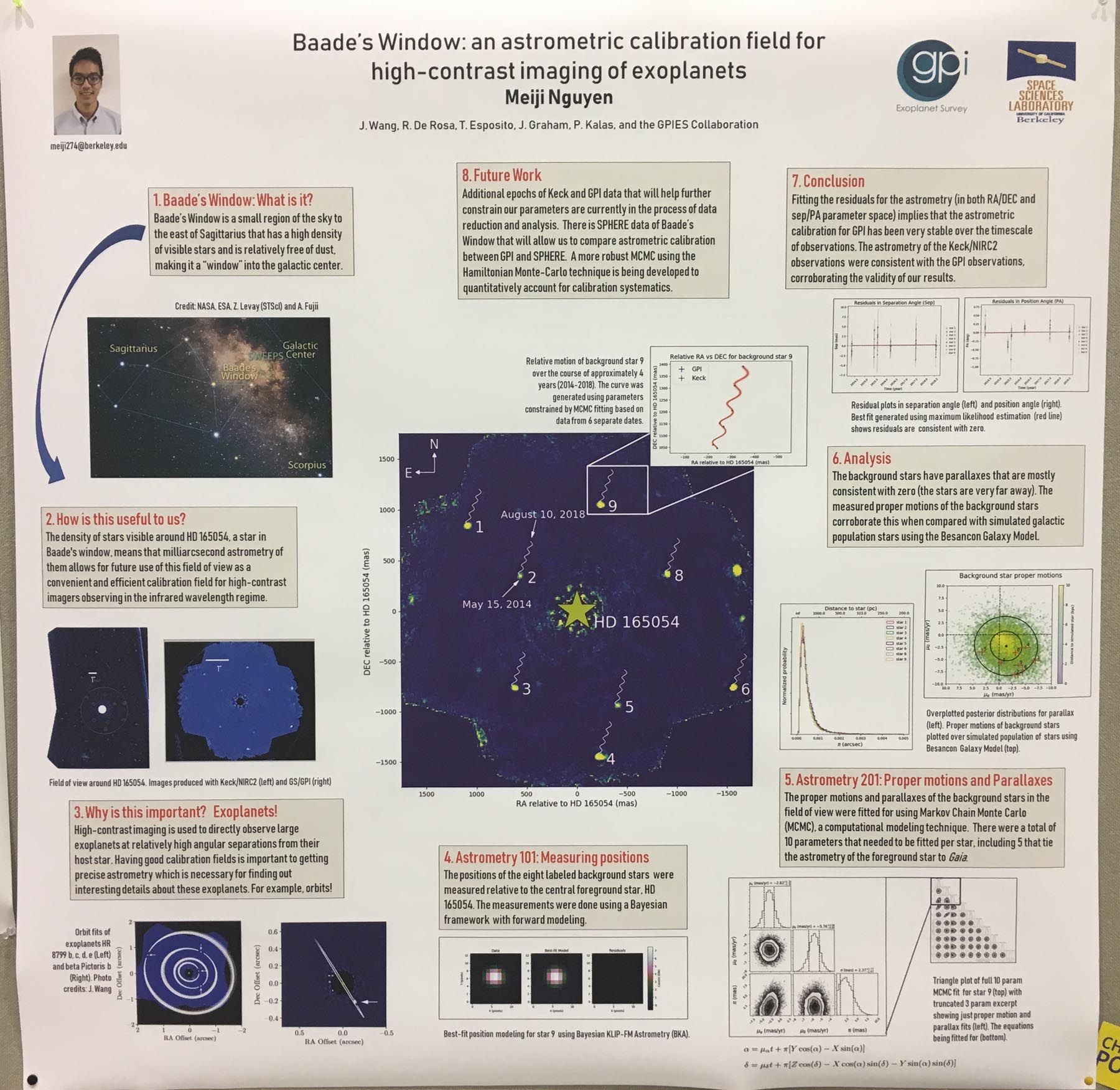I think we had an impressive number of presentations from our Berkeley exoplanets group at last week’s annual meeting of the American Astronomical Society held in Seattle. I was bouncing from room to room in the convention center just to catch as many as possible since there were overlapping sessions. I gave a talk that reviewed an international effort from the ground and space to detect rings around the exoplanet beta Pic b as it transited in front of its host star. Rob De Rosa presented our latest results where we (ahem, he did most of the work) discovered two stars that had a close encounter with the HD 106906 planetary system which could explain the highly unusual asymmetries discovered in its dynamical architecture. Tom Esposito gave a major presentation summarizing all of our debris disk breakthroughs with GPIES (101 stars surveyed, 25 debris disks imaged). Megan Ansdell gave two talks, one concerning her 2018 paper on the dipper phenomenon, and another about machine learning and AI methods applied to photometric data from Kepler. Gap year student Meiji Nguyen reviewed his work on the GPI astrometric calibration field called Baade’s Window. Gaspard Duchene presented his Hubble Space Telescope study of edge-on disks, and Becky Jensen-Clem talked about her observational efforts to detect polarized light from exoplanets and brown dwarfs. My Caltech colleague Max Millar-Blanchaer also presented a poster on our HST program to detect scattered light from M dwarf debris disks in Sco-Cen. Also, I met with Tom Madura and Carol Christian several times to brainstorm new efforts for 2019 in teaching astronomy to the blind and visually impaired. Finally, it’s worth noting that the multiple efforts of our team were made possible through grants from NASA and the NSF.
Kudos to our team at the American Astronomical Society meeting
January 15, 2019
